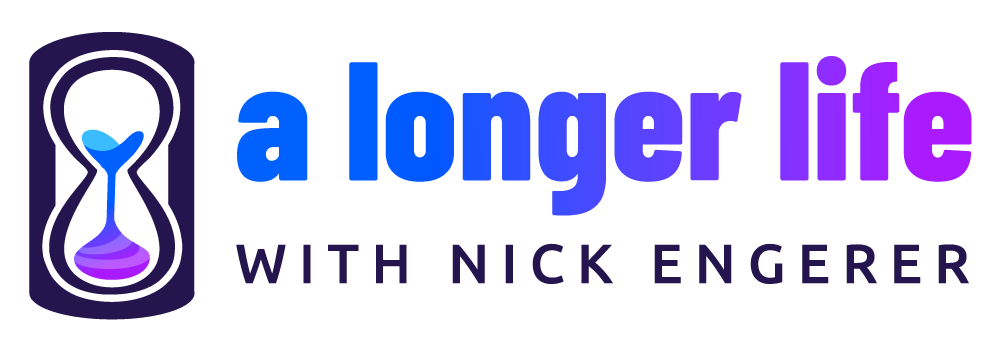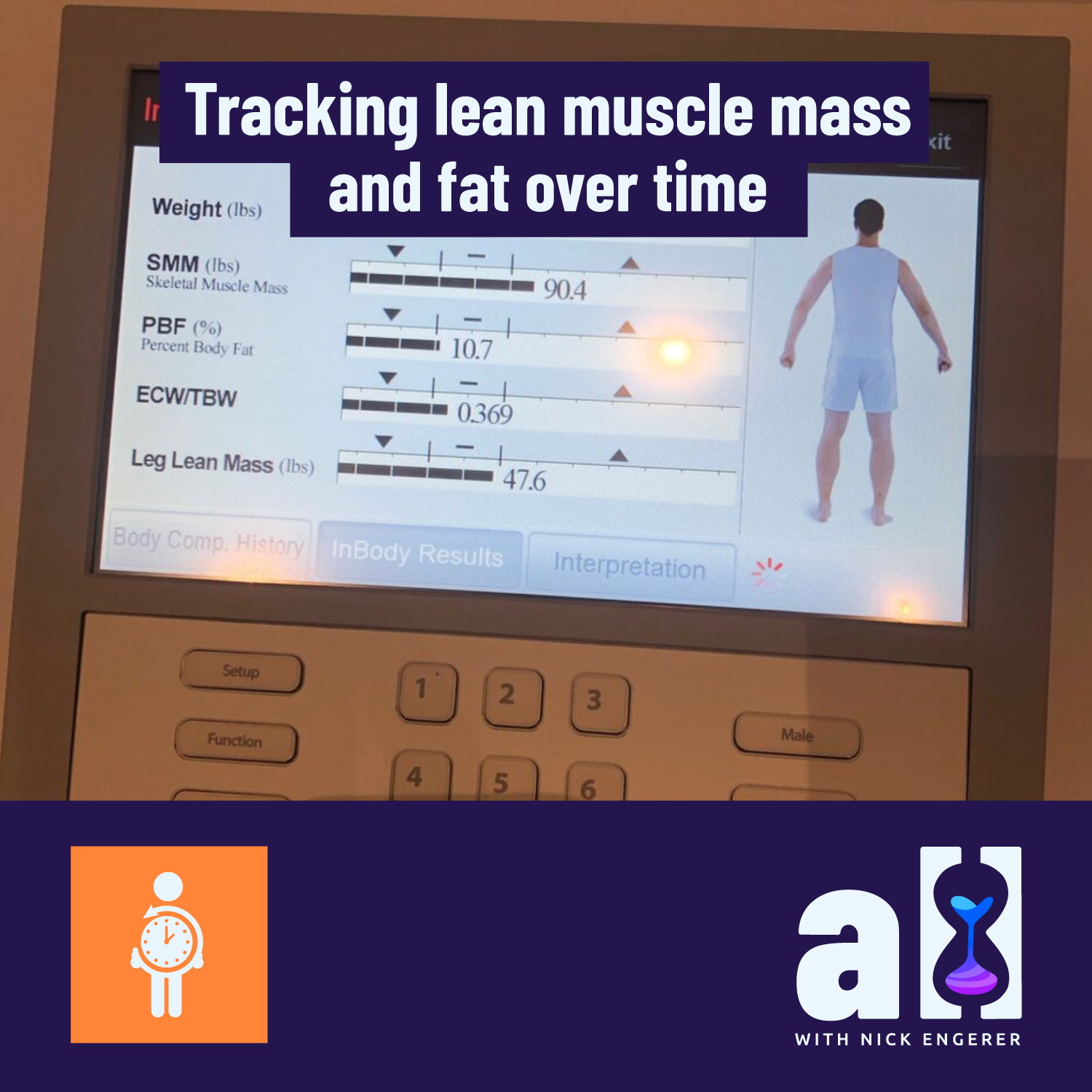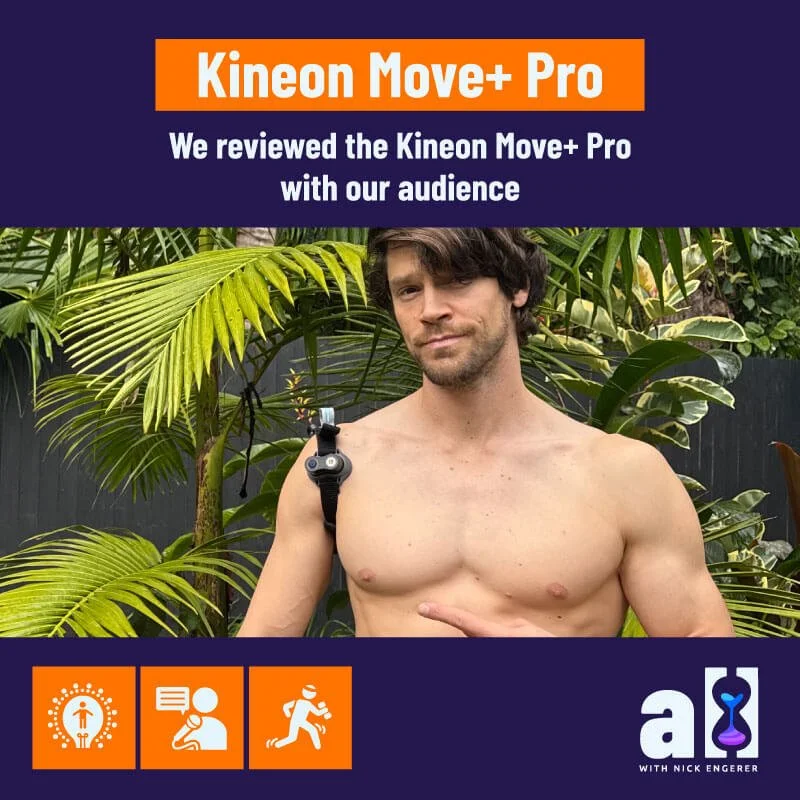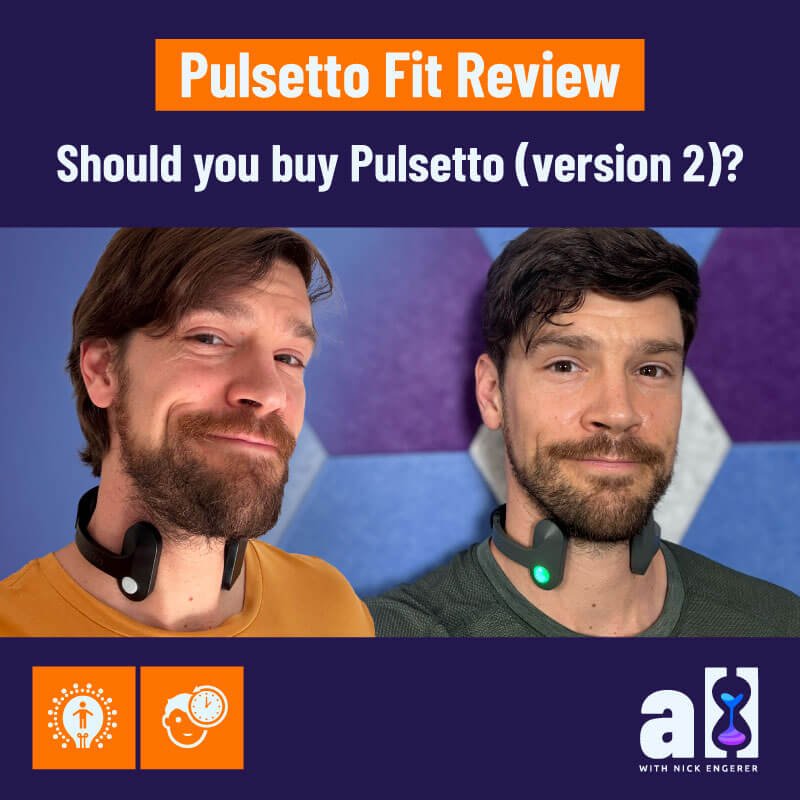Body composition data - Tracking lean muscle mass and fat over time
InBody and Styku body scan technology - Is it actionable?
While we are (im)patiently waiting on the results from my blood tests at NextHealth, let’s take a look at another longevity and wellness datapoint that I was able to collect during my recent visit. In my meeting with my “Health Coach” at NextHealth, we completed two types of body composition scans. The first was an ‘InBody’ scan which uses bioelectrical impedance to estimate:
Total skeletal muscle mass
Total body fat in kilograms
Total body fat percentage
Visceral fat
As well as make estimates of your basal metabolic rate and a few other body composition items.
The second was a a Styku which actually uses an Xbox Kinect and a rotating platform to create a full 3D scan of your body.
A key question that I have for these types of body scans and body composition data overall is - “Is this information actionable/valuable?”. In this post, I’ll aim to answer that question from my perspective.
Let’s dive in and take a look at some results!
Comparing my InBody scan across 18 months
The biggest value in body composition data lies in tracking how it changes over time. On shorter timescales of months to a year, you are able to track how your diet and/or exercise routines are affecting your lean mass, fat mass and/or visceral fat values. Over longer timescales, on the order of several years, you may even be able to track the impacts of aging on your body composition (e.g. the loss of lean muscle mass as the years stack up - yikes!).
I did my first InBody composition scan at the Health Nucleus in May of 2018. At the time, I was about 11 months into a year-long experiment eating a (very clean, whole foods based) ketogenic diet. I was doing an above average amount of physical activity (12k steps/day), but was not ‘working out’ or completing any cardio exercise.
However, that has all changed significantly. As I recently wrote, one of the key outcomes from my visit to the Health Nucleus was a life-long dedication to cardio fitness! So in the 18 months since my first InBody scan, I had added several days/week of cardio training (mostly running), and some strength training (still working on adding more of this), and I had returned to a whole-foods, carb-based diet (retaining plenty of healthy fats). One additional factor on the diet front has been my experiment over 2019 of water-only fasting for 2-4 days per month.
What did my two InBody scans show (before & after)?
“As you can see here”, Sirish the health coach pointed out with his pen, helpfully marking up my scan results, “Your body is actually pretty symmetrical from left to right. That’s not actually very common”.
I was immediately pleased. Symmetry was something I had been working on religiously, aiming to correct the imbalances I had in my body from left (weak) to right (strong), particularly in my running stride and strength workouts like push-ups.
“Your lean body mass is 157lbs (71kg), and with a total body weight of 177lbs (80kg), that places you at 10.7% body fat, which is at the low end of the normal range”, he commented. “We will get some further detail on this with the Styku body imaging data next”.
“That’s great mate!”, I responded. “That’s actually about the same number I get on my FitBit scale at home”. It was a solid ‘calibration’ of my in-house data, which is very useful.
In the following images (you can click through using the embedded controls), I have add some call-out annotations to draw attention to some actionable insights from my reports.
 |
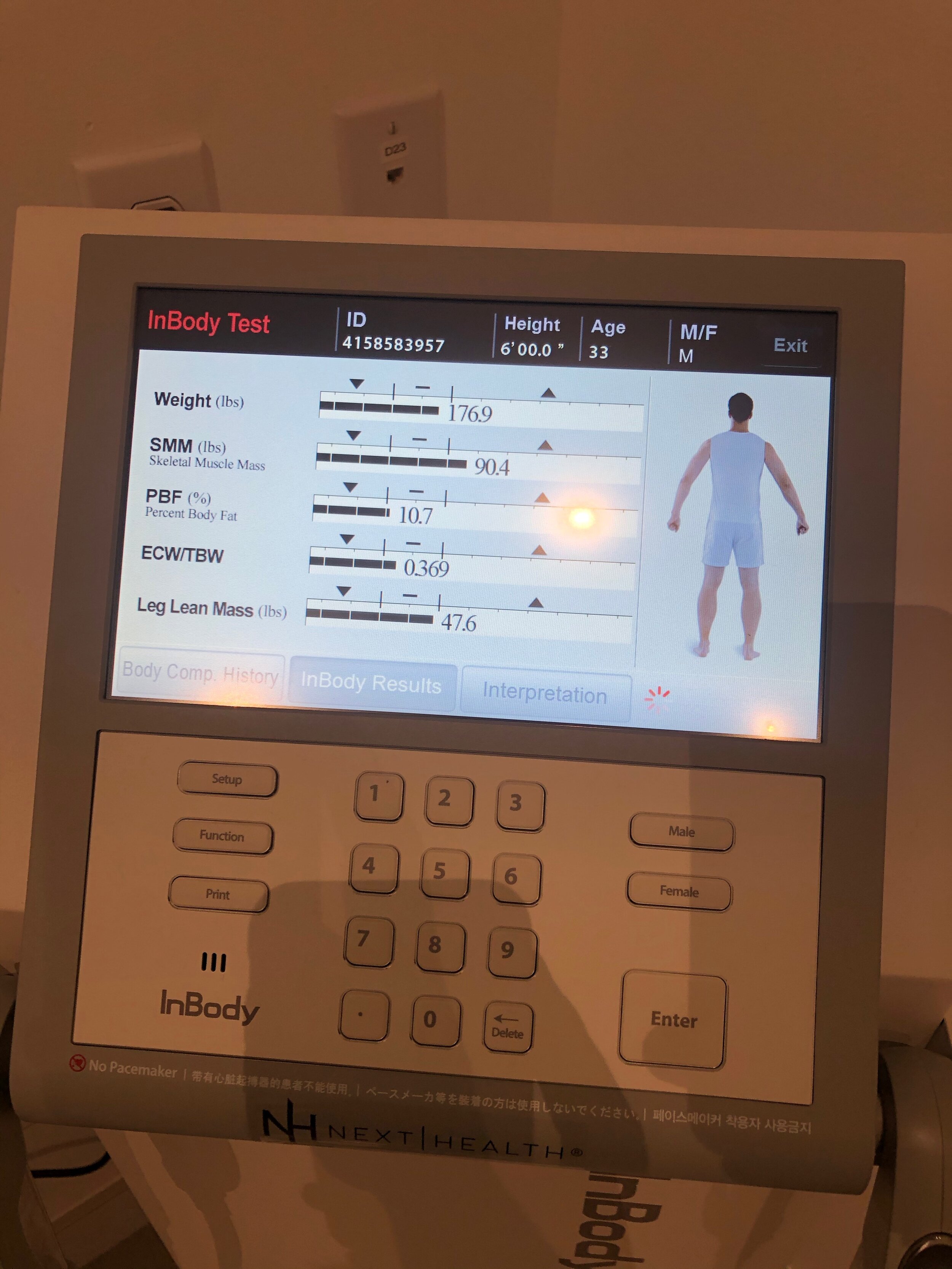
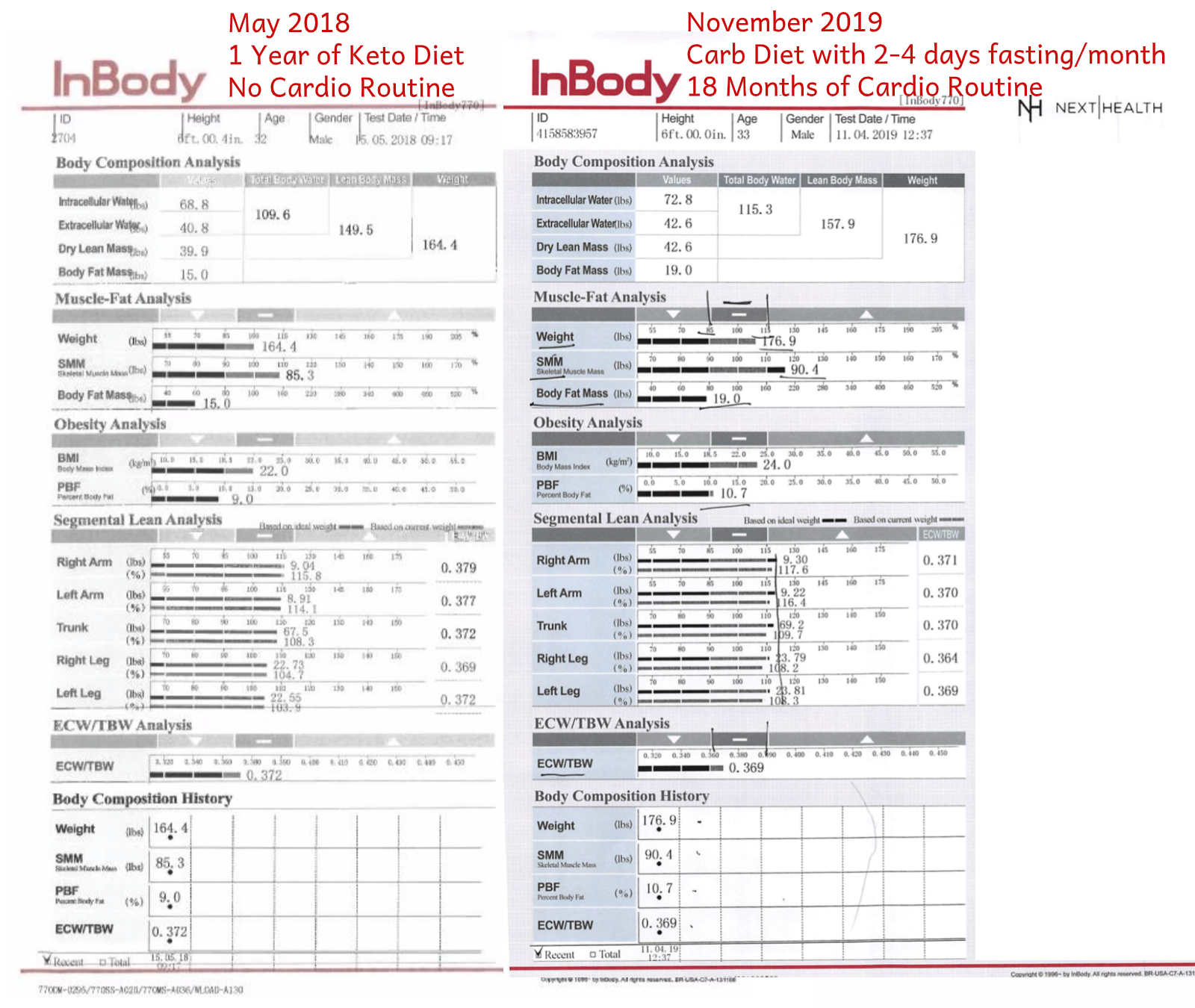
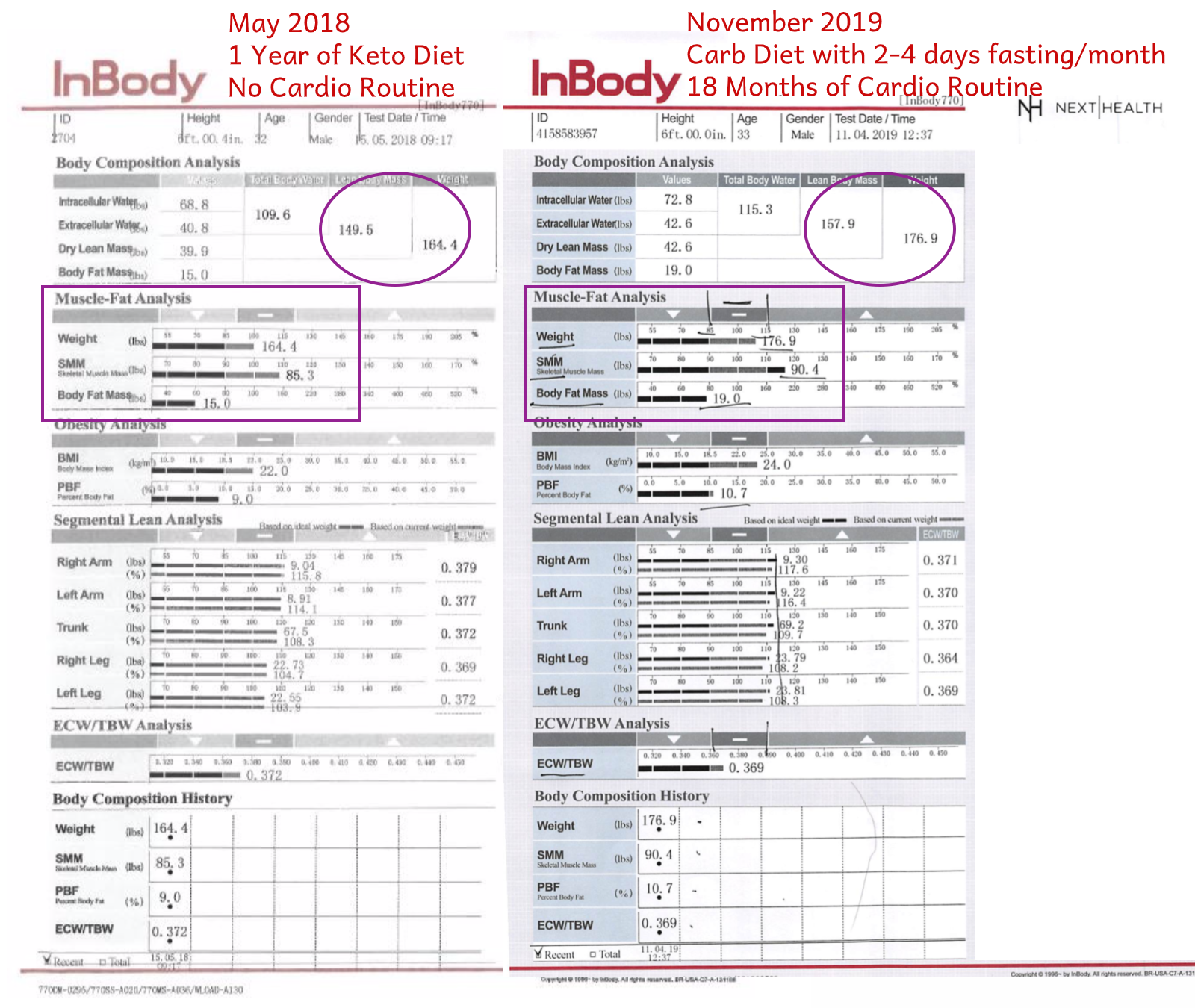
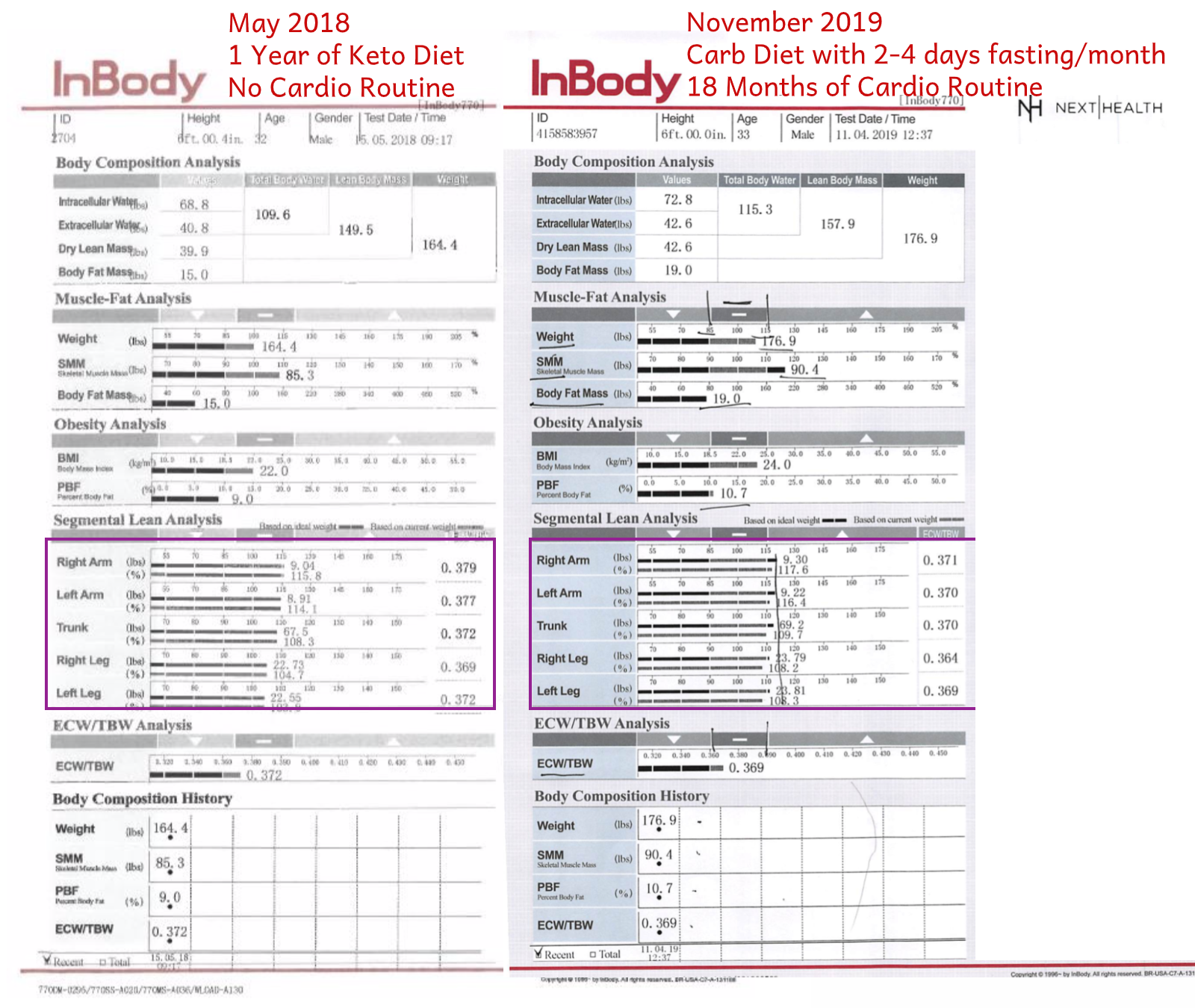
Conclusion: The InBody scan can definitely provide you with actionable data. Knowing where you stand with respect to your visceral fat mass alone is hugely valuable for assessing your disease risk For me, it was able to provide evidence that changes in my diet and exercise routine had contributed positively to my lean body mass. It also provided me with evidence that my efforts to increase symmetry in my body were fruitful and worth maintaining.
A Styku Haiku
One spinning platform
I stand upon with arms spread
Where did my hand go?
Styku body imaging
“Go ahead and strip down to your underwear and jump on this platform.”, Sirish beckoned, “I will step outside until the scan is completed”.
“Naw, mate. I couldn’t care less if you stick around!”, I explained, as I jumped upon the pedestal and started a slow rotation with my arms spread wide. Hey, it was just another day at NextHealth, where between the Cryo, the Infrared Sauna and Instagram, everyone’s half-naked most of the time anyway 😉!
Nudity jokes aside, the Styku scan provided some damn good data! Superceding the InBody scan with its detail, the Styku scan reported on the individual components of the legs, arms and trunk. Despite the accidental truncation of my left forearm (oops!), I was able to get a fairly comprehensive set of data points regarding my lean muscle mass distribution across the body.
Conclusion: The Styku data was certainly actionable. For example, while I had great symmetry in my thighs from left to right, the Styku was able to detect and measure asymmetry in my left and right calf muscles. I now will be adding some additional hypertrophy exercises to that lagging left calf muscle, and hopefully this will lead to performance gains in my race times!
Detailed Styku esults:
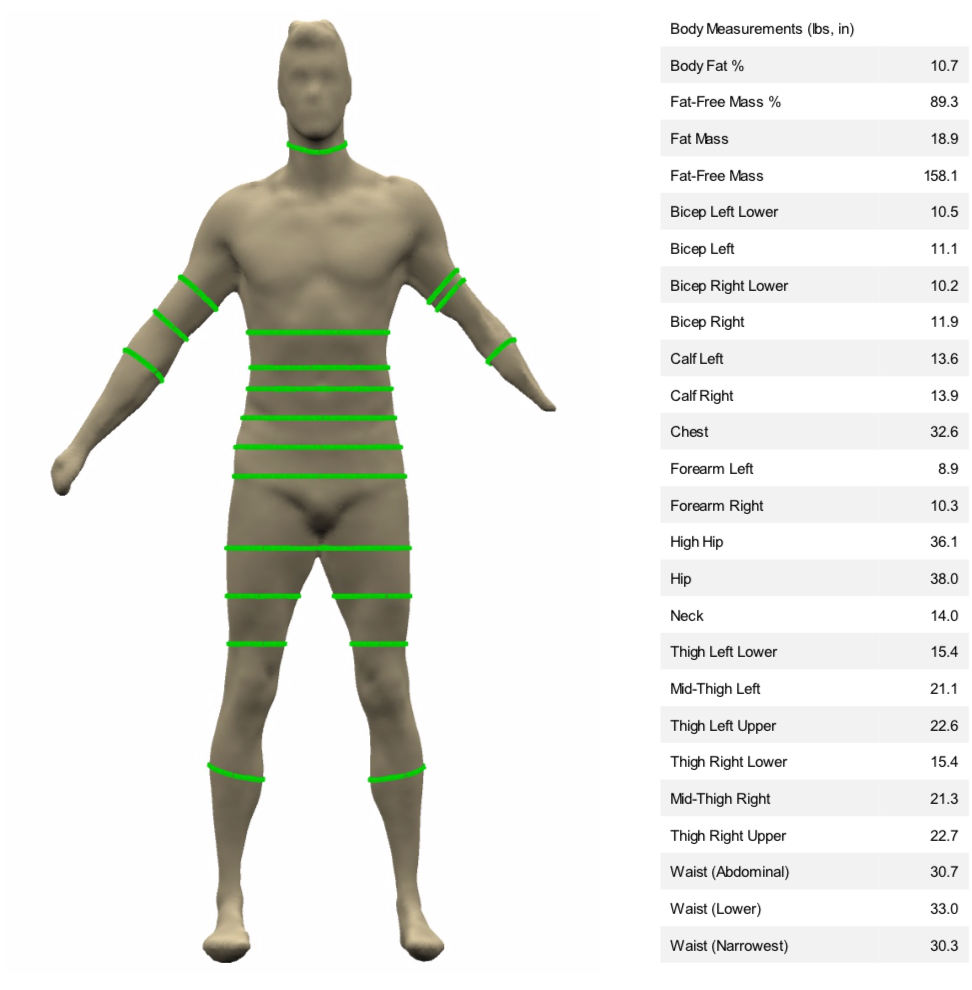

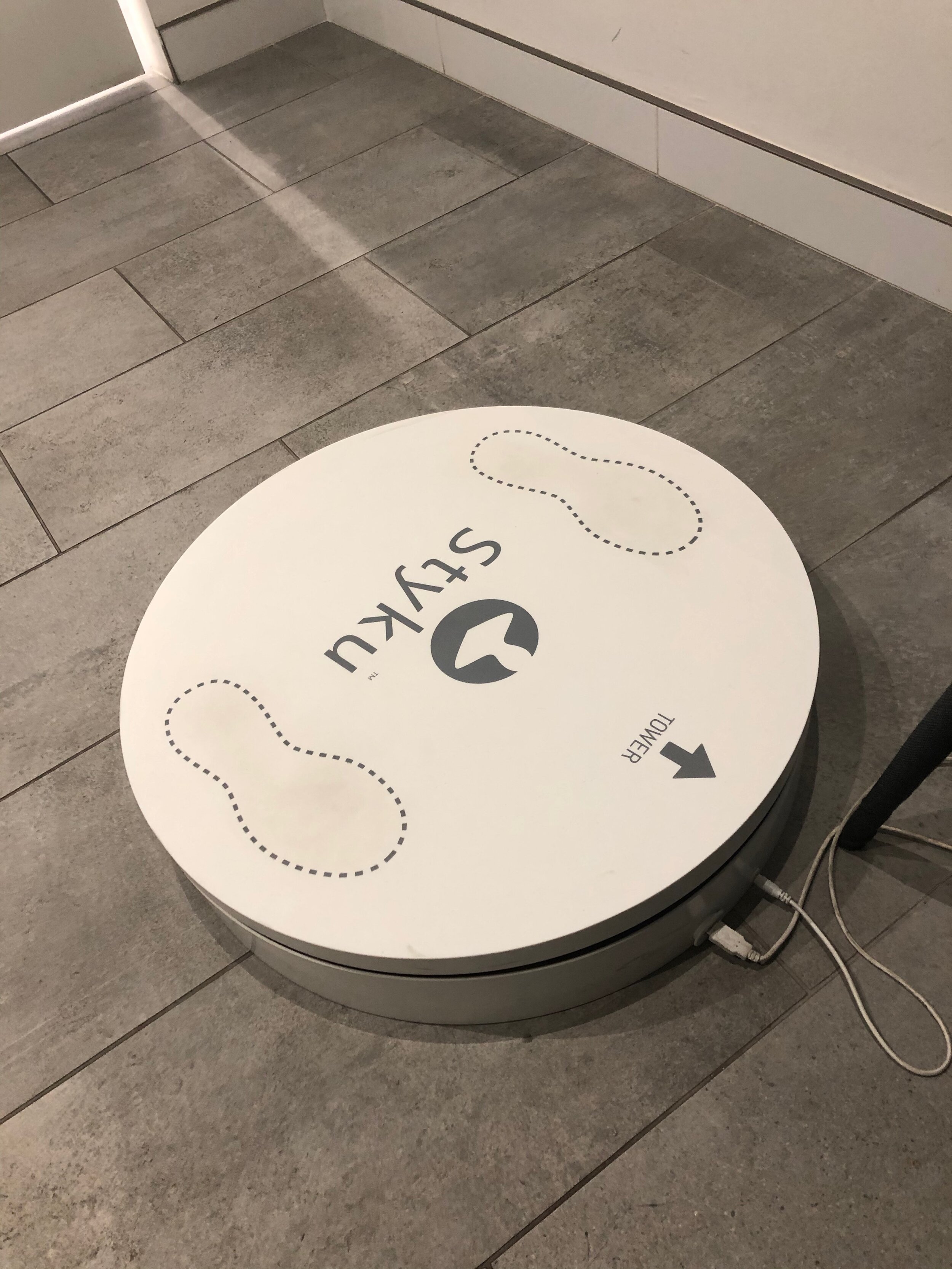
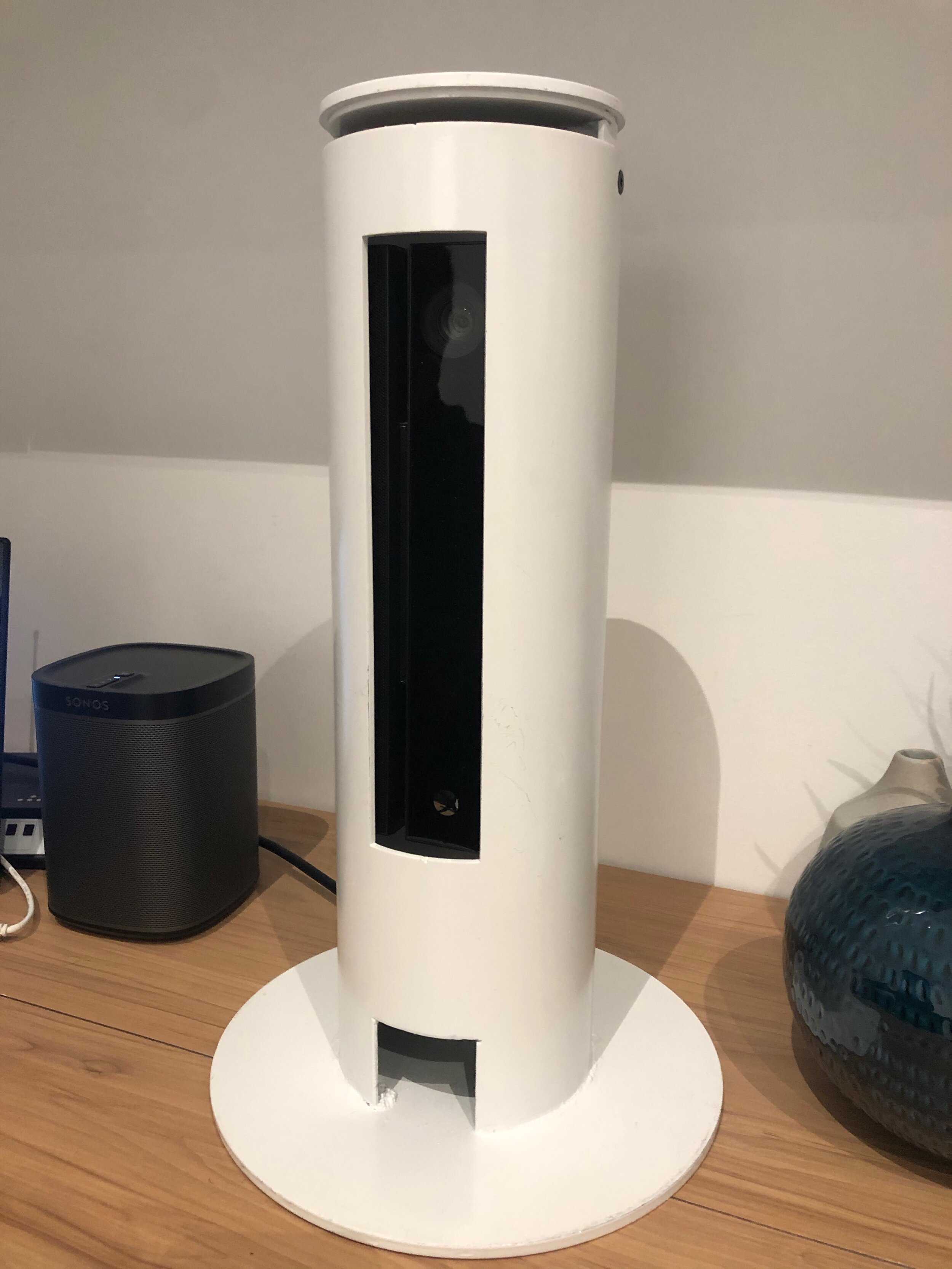
Body scan data is actionable - But blood markers will be even more exciting
Overall, I believe that this type of body scanning data is valuable for folks like me, who are trying to optimise their body and mind, relentlessly (hey that’s what being a biohacker is all about!). It may have additional benefits for folks who are overweight/obese, as it can highlight their elevated risks from carrying high amounts of visceral fat. I plan to continue tracking my results with both the Styku and the InBody tools on a yearly basis (and of course I will share what I learn on this blog!).
Body composition discussions aside, I only have to wait a few more weeks until I get the results from the 15 vials of blood I gave to NextHealth. I’m totally jazzed about this, and can’t wait to share what I learn from detailed analysis of my blood. Be sure to subscribe to the blog below to get notified whenever I add new longevity, healthspan and biohacking focused content!

